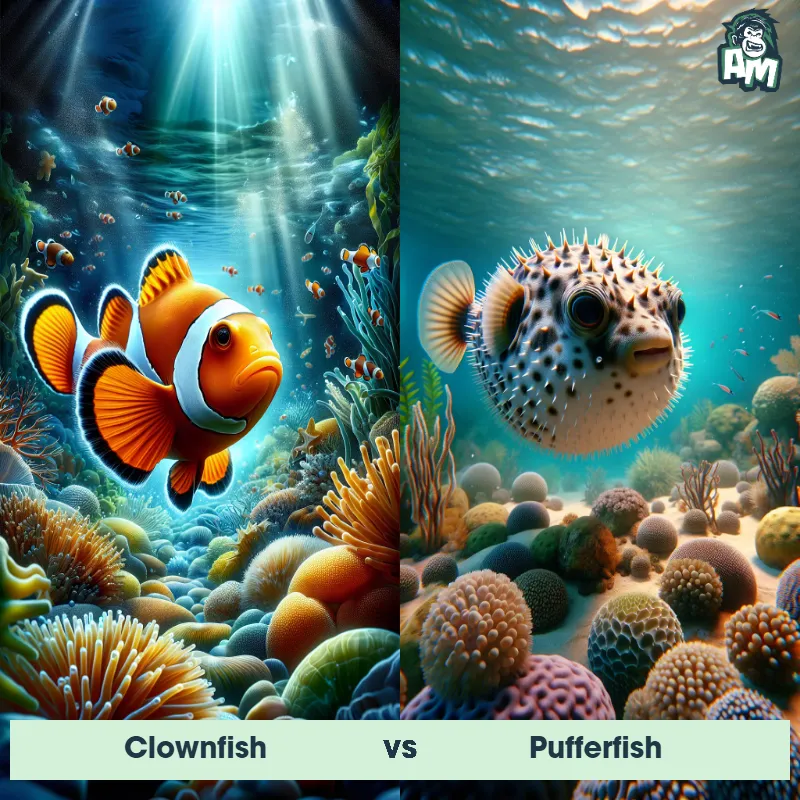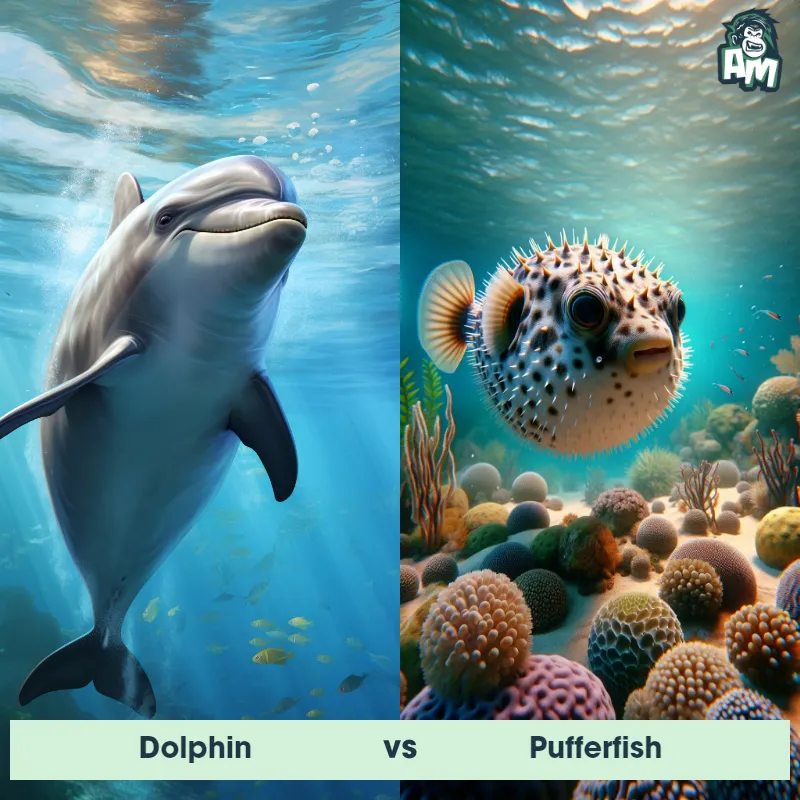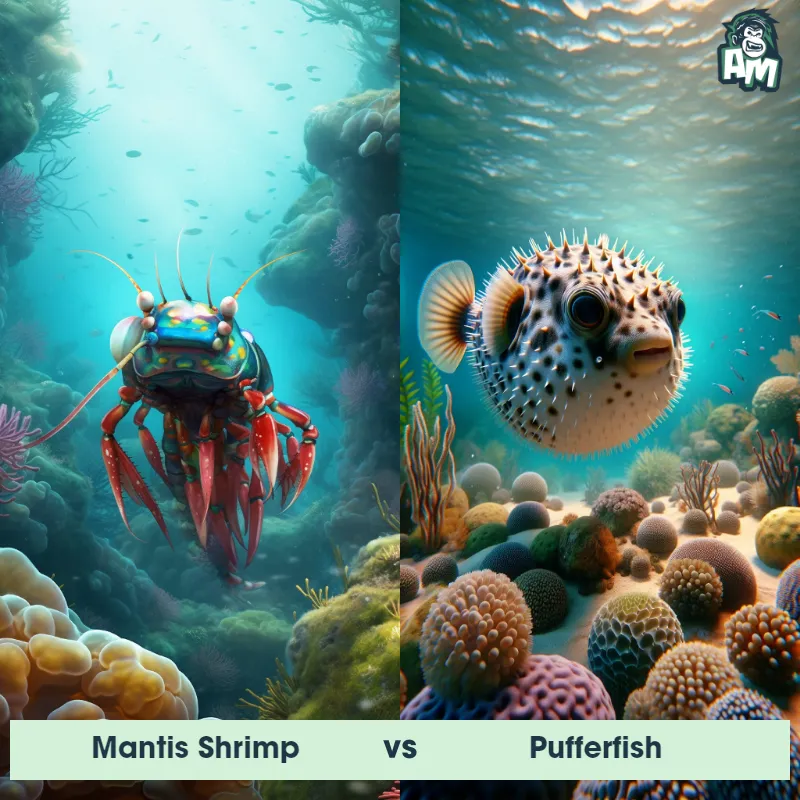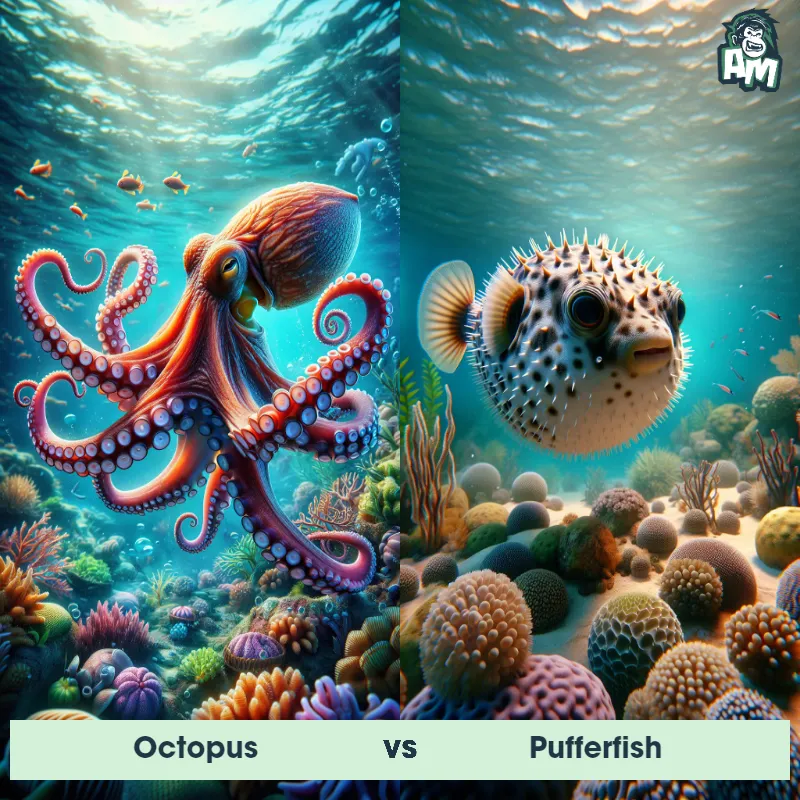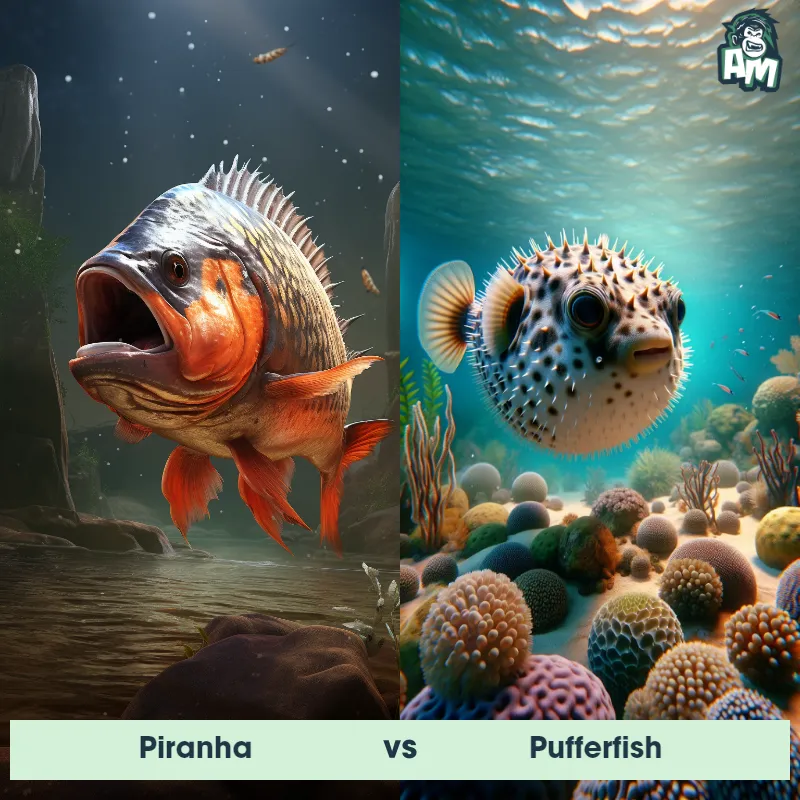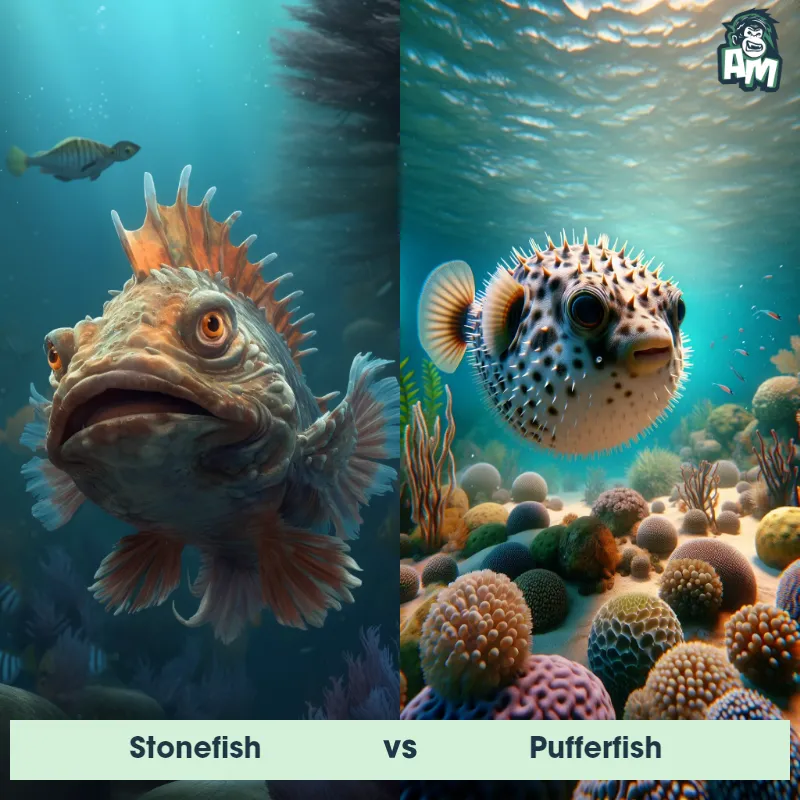The Pufferfish
The Pufferfish, also known as blowfish, are fascinating creatures found in tropical and subtropical waters around the world. They have a unique ability to inflate their bodies by swallowing large amounts of water or air, transforming into a spherical shape that acts as a defense mechanism against predators. Pufferfish possess prickly spines covering their skin, which deter potential threats. With various sizes ranging from just a few centimeters to more than a meter long, their bodies are typically covered in a mix of vibrant colors and distinct patterns, adding to their overall charm and uniqueness.
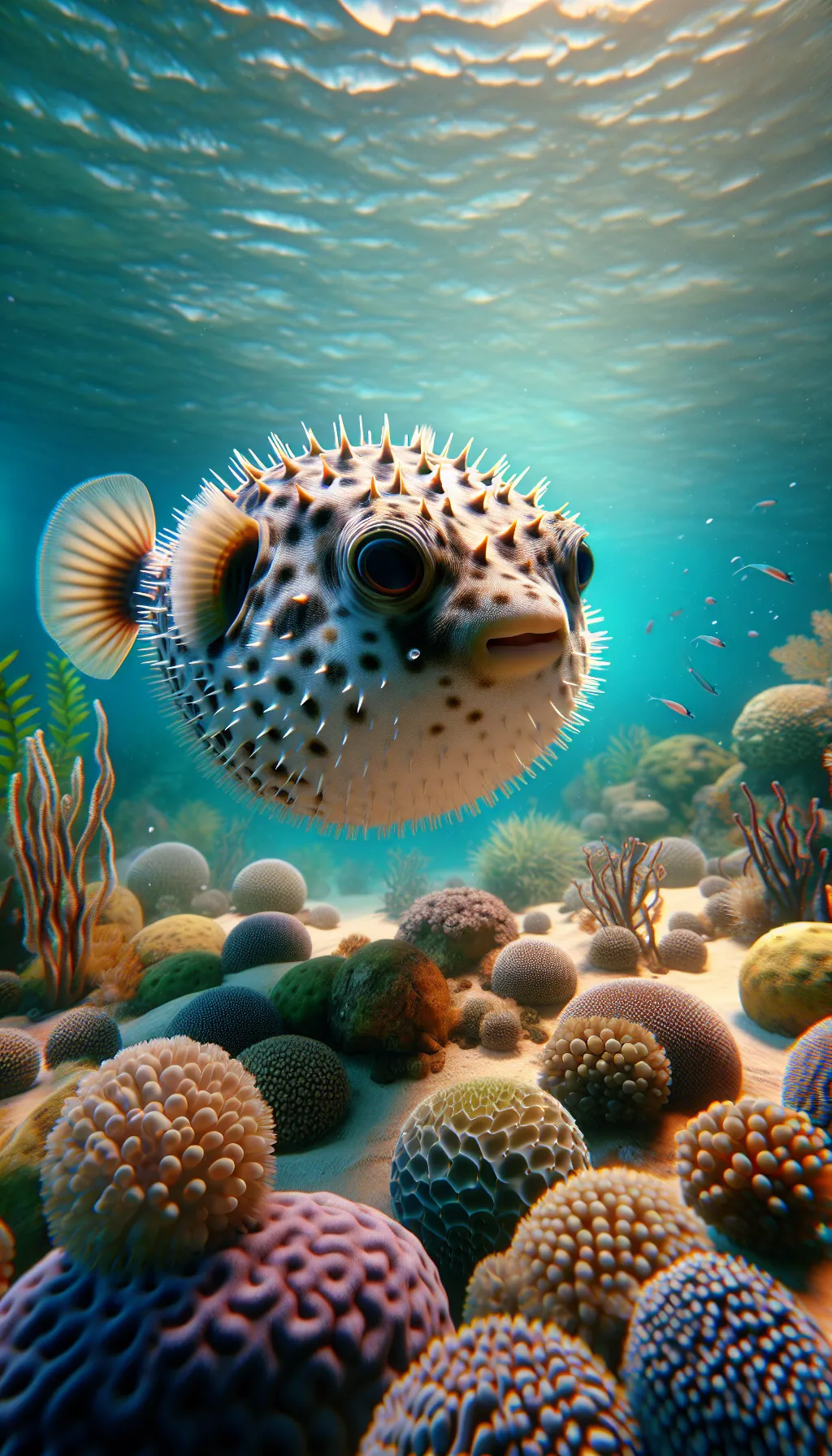
| Pufferfish | |
|---|---|
| Size | Varies from a few inches to a couple of feet (5-60 cm) |
| Weight | Varies depending on species, can range from a few ounces to several pounds (100g-2kg) |
| Speed | 1mph (1.6km/h) |
| Key Strength | Inflation and spines for defense |
| Biggest Weakness | Limited mobility and slow swimming speed |
| Scientific Name | Tetraodontidae |
| Family | Tetraodontidae |
| Habitat | Coastal waters, coral reefs, and estuaries |
| Geography | Found in oceans worldwide, primarily in tropical and subtropical regions |
| Diet | Mostly herbivorous, but some species also eat small invertebrates and crustaceans |
| Lifespan | 3 years - 5 years |

The Pufferfish
The Pufferfish, also known as blowfish, are fascinating creatures found in tropical and subtropical waters around the world. They have a unique ability to inflate their bodies by swallowing large amounts of water or air, transforming into a spherical shape that acts as a defense mechanism against predators. Pufferfish possess prickly spines covering their skin, which deter potential threats. With various sizes ranging from just a few centimeters to more than a meter long, their bodies are typically covered in a mix of vibrant colors and distinct patterns, adding to their overall charm and uniqueness.
Fun Fact: Pufferfish have an incredible adaptability when it comes to their diet, which mostly consists of shellfish, crabs, and other invertebrates. However, some species of Pufferfish are known to feed on algae and even coral, showcasing their ability to consume an assortment of food sources.
| Pufferfish | |
|---|---|
| Size | Varies from a few inches to a couple of feet (5-60 cm) |
| Weight | Varies depending on species, can range from a few ounces to several pounds (100g-2kg) |
| Speed | 1mph (1.6km/h) |
| Key Strength | Inflation and spines for defense |
| Biggest Weakness | Limited mobility and slow swimming speed |
| Scientific Name | Tetraodontidae |
| Family | Tetraodontidae |
| Habitat | Coastal waters, coral reefs, and estuaries |
| Geography | Found in oceans worldwide, primarily in tropical and subtropical regions |
| Diet | Mostly herbivorous, but some species also eat small invertebrates and crustaceans |
| Lifespan | 3 years - 5 years |
Pufferfish Matchups
We use AI to simulate matchups between the Pufferfish and other animals. Our simulation considers size, strength, and natural predatory behaviors to determine the most likely outcome.
Pufferfish: Diet, Predators, Aggression, and Defensive Behaviors
What do Pufferfish eat?
Pufferfish are carnivorous creatures that primarily feed on small fish, crustaceans, mollusks, and algae. Their diet can vary depending on the species and their environment. They use their beak-like teeth to crush hard-shelled prey such as crabs and snails.
Do Pufferfish have any predators?
Yes, despite their ability to inflate and deter potential threats, Pufferfish still have predators in the wild. Some of their predators include sharks, dolphins, seals, and larger fish. However, not all predators are affected by the toxins found in the Pufferfish's body.
Are Pufferfish aggressive?
Pufferfish are generally not aggressive towards other marine life or humans. They tend to be shy and docile creatures, only becoming defensive when they feel threatened. However, they may exhibit territorial behavior during mating season.
Do Pufferfish fight?
Pufferfish do not engage in fighting with other marine life or amongst themselves. Instead, they rely on their ability to inflate their bodies to appear larger and more intimidating to potential threats. This defensive mechanism helps them avoid confrontation.
How do Pufferfish defend themselves?
Pufferfish have a unique defense mechanism where they can inflate their bodies by swallowing water or air to appear larger in size. This inflation makes it difficult for predators to swallow them or bite into their bodies. In addition, many species of Pufferfish contain tetrodotoxin, a potent neurotoxin that can be lethal to predators if ingested.
What is Pufferfish's biggest weakness in a fight?
Despite their defensive capabilities, the Pufferfish's biggest weakness in a fight is their slow swimming speed. When inflated, they become more vulnerable due to their reduced agility and limited mobility. This can make them an easier target for faster and more agile predators.
Fun Fact: Despite their comical appearance, Pufferfish are highly toxic. They contain a lethal substance called tetrodotoxin, which is found in their internal organs, such as the liver and ovaries. This potent neurotoxin is known to be more lethal than cyanide and can be fatal if consumed in large quantities.
Fun Fact: Pufferfish exhibit remarkable intelligence and intricate courtship behaviors. During the mating season, male Pufferfish create stunning geometric patterns on the seafloor to attract female Pufferfish. These "crop circles" are meticulously crafted by the males using their fins to dig and decorate the sand, showcasing their exceptional artistic abilities.



